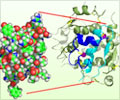In a recent study it was found that glycated hemoglobin levels of kids with type 1 diabetes is correlated negatively with household income.

The researchers used statistics collected from 1,766 children who had been diagnosed with type 1 diabetes at CHU Sainte-Justine between 1980 and 2011. They estimated their household income by using the median for their postal code as reported by Statistics Canada and standardized their glycated hemoglobin levels (HbA1c) in order to undertake the study. "We know that there are a variety of socio-economic factors that affect metabolic control in diabetic children, but it is difficult to compare studies as researchers look at these factors in different ways", Deladoëy said. "However, median household income is a good proxy for these factors taken together". In addition, all studies on this subject have come from countries where users must pay to consult a health care professional whereas the present study is the first to look at this in the context of free health care. A study from Ontario, published simultaneously in another journal, reports similar findings.
Because there are so many factors influencing the treatment of this disease, the researchers were not surprised by their results. "These confirm our clinical impression that the most important factor correlated with the treatment of type 1 diabetes is household income", Deladoëy said. Importantly, the researchers found that the difference in glycated hemoglobin levels in kids from the poorest and the richest neighbourhoods corresponds to a doubling of the risk of damage to the eyes (diabetes is a leading cause of blindness in adulthood). "Type 1 diabetes is a chronic disease requiring multiple daily insulin injections and blood tests throughout the individual's life. Our study suggests that there should be greater support to children with type 1 diabetes who live in low income areas; this could include, for instance, increasing the number and length of visits from social workers", Deladoëy explained.
Source-Eurekalert










